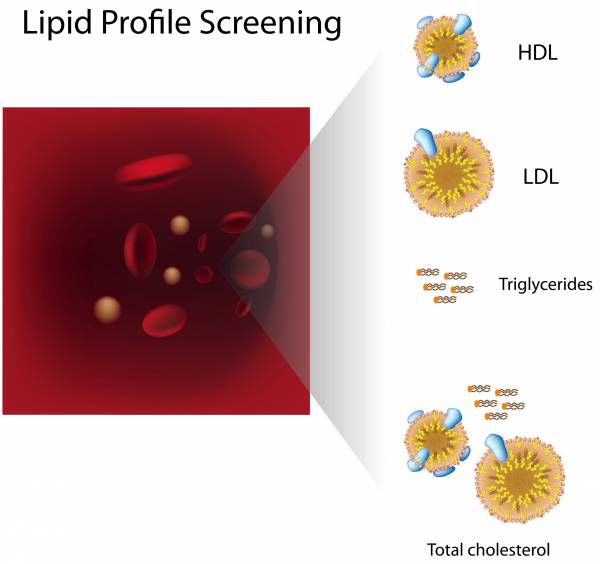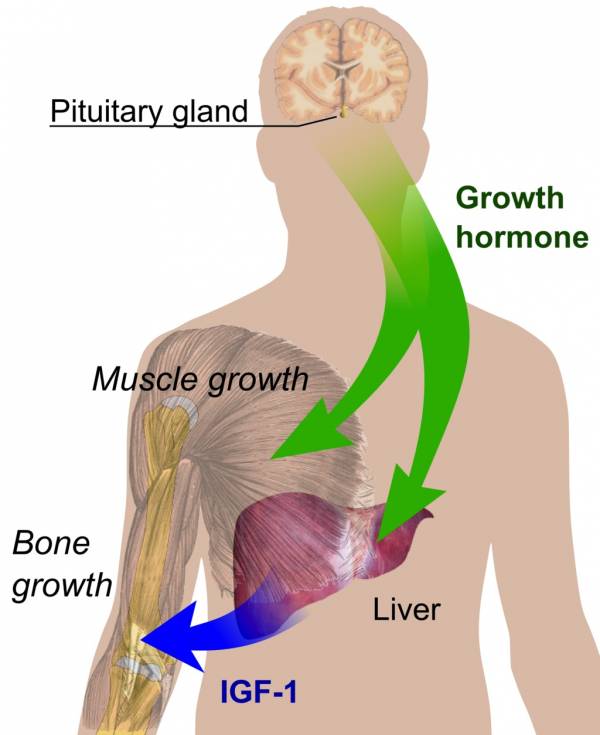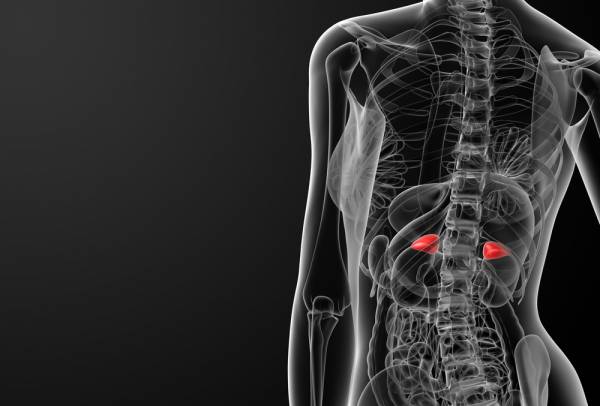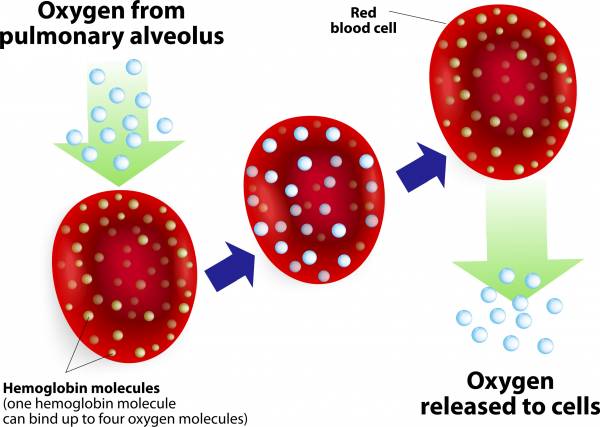As a sports nutritionist, I recommend many of the athletes and clients I advise to undergo basic blood testing for vitamins, hormones, nutrients, and metabolic factors that directly affect health and performance. I personally test my blood four times each year.
After all, if you don’t know what’s going on inside your body, then how do you know you’re not one of those people who are healthy on the outside, but unhealthy on the inside? And if you struggle with anything like brain fog, constipation, bloating, low libido, poor sleep, or slow workout recovery, then you probably fall into the category of people who need to test their body.
As a matter of fact, even if you’re exercising hard and eating healthy, it turns out that what’s actually going on inside your body can be quite disturbing, and include:
- Low testosterone and high cortisol, manifesting in overtraining symptoms, low libido, lack of motivation, and loss of competitive drive.
- Low luteinizing hormone, high estrogens, and low progesterone, manifesting in brain fog, appetite cravings, and a seeming inability to shed fat despite lots of training.
- High thyroid-stimulating hormone and low thyroid hormones, resulting in a constant feeling of being cold, sluggish metabolism, and impaired digestive function, gas, and bloating.
- Low magnesium and electrolyte levels, which can cause trouble getting to sleep at night, waking up multiple times during the night, or being tired during the day.
- High inflammation markers, resulting in sore joints, nagging injuries that won’t go away, missing workouts from sickness or having sniffles all the time, and occasional ghost symptoms, like random headaches, heart flutters, or muscle tingling and numbness.
The Wide World of Testing
It can be confusing to navigate through the world of testing. There are certainly quick and convenient testing services such as WellnessFX and DirectLabs, which have bundled testing packages and allow you to purchase a test online, print a piece of paper called a requisition form, then bring it to a lab near your house for a quick and easy blood draw. But many people have physicians who can run these tests (allowing for insurance coverage), so I’m still often asked what the best parameters to test are if you want to get the most bang for your buck and find out exactly what’s going on inside your body.
So which blood values should you test if you’re concerned about issues like this or want a full, informed glance about what’s going on inside your body and what’s in your blood?
Without further ado, here are the top ten ways to test your body:
1. HDL:Triglyceride Ratio
While there are a host of things you can test on a cholesterol panel, such as LDL, total cholesterol, HDL, VLDL, etc., one of the most important parameters to pay attention to is your ratio of HDL to triglycerides. In people who are consuming low fiber diets high in vegetable oils and processed ingredients (a stereotypical “gym junkie” diet), I tend to see sky-high triglyceride and low HDL.
Your goal should be to get HDL higher than triglycerides, and preferably a 1:1 ratio or better of HDL:triglycerides.

2. HS-CRP
C-reactive protein is a marker of full-body inflammation. Inadequate recovery or overtraining, high intake of inflammatory foods like sugar and commercial meat or dairy, and high stress levels can all elevate HS-CRP.
I recommend that for athletes looking for ideal levels of anti-inflammation, HS-CRP be consistently below 0.5.
3. Free Testosterone
For both men and women, testosterone is an anabolic, growth-promoting hormone associated with everything from fat loss to muscle gain to libido to heart health to anti-aging. But often, even if total testosterone is elevated, free testosterone is low. This is usually because total testosterone is bound to sex hormone binding globulin (SHBG). This typically happens due to excessive stress or inadequate calorie intake. A good way to do detective work on whether this is occurring is a free testosterone measurement.
Use this chart to look at the age group references for free testosterone and shoot for the top percentage for your age group.
4. TSH
Thyroid-stimulating hormone is made by a small gland in your brain called the pituitary and triggers your thyroid gland in your neck to produce thyroid hormones (triiodothyronine (T3) and thyroxine (T4)), which are crucial for your body’s use of energy.
In athletes and active individuals, high TSH is usually due to three factors:
- High cortisol levels causing cell thyroid receptors to be insensitive.
- Small intestinal bacterial overgrowth from gut dysbiosis, usually due to excessive carbohydrate intake, psychological stress, or both.
- Excessive caloric or carbohydrate restriction.
When you test TSH, look for ideal values to be between 0.5-2.0.
5. IGF-1
You’re probably familiar with growth hormone (GH) as a potent anti-aging and anabolic, muscle-building hormone. IGF-1, or insulin-like growth factor-1, is stimulated by GH and is an easier way to measure GH activity than to measure GH directly, which is a more difficult and inaccurate lab test. Both these hormones are the main hormones responsible for cellular and muscle growth, and both support anabolic pathways that lead to enhanced repair and recovery, so if IGF-1 is suppressed, then recovery is compromised.
Low IGF-1, specifically anything below about 115 ng/mL, is usually a result of lifestyle stress, exercise stress, and calorie restriction or nutrient depletion.

6. Vitamin D
25-hydroxy vitamin D is a blood measurement that allows you to see if your levels of this potent steroid and hormone precursor are adequate. Most athletes and exercisers tend to be deficient in this anabolic, fat-soluble vitamin, and often, low vitamin D correlates to low testosterone and high cortisol.
I generally recommend looking for levels between 40 and 80 ng/mL – and if you test low, don’t necessarily go out and mega-dose. Instead, get natural sources of fat-soluble vitamin D, such as wild caught fish, whole eggs, and liver.
7. Glucose
Just because you fall into the acceptable reference range for fasting glucose doesn’t mean you’re safe. For example, a doctor may look at a fasting glucose of 95 mg/dL and say you have no risk. But that amount of glucose in the bloodstream can cause over secretion of insulin that adversely impacts your cells, your recovery, and your waistline.
Fasting glucose levels should ideally be below 85 mg/dL in active individuals. If they’re not, you’re probably too stressed out (which mobilizes the liver’s storage carbohydrate) or you’re eating too much sugar.
8. Adrenal Stress Index (ASI)
An ASI looks at four different saliva samples at different points throughout the day, and helps to reveal the health of your adrenal glands. A basic ASI will measure two parameters:
Cortisol Levels: You’ll measure four different cortisol levels throughout the day to determine if you have a proper circadian pattern. Normally your cortisol levels should be at the highest levels in the morning and then decrease throughout the day. This pattern will help to give you the energy you need throughout the day, while the lower cortisol levels at night will allow you to rest and fall asleep.
If you’re overtrained, you usually have low cortisol levels in the morning, and they also tend to be lower than normal throughout the rest of the day. But as you’ve learned, it is common for the cortisol levels to be high in the initial stages of overreaching, as this is the body’s response to chronic stress. But over a period of time, the adrenal glands will weaken, which will eventually result in depressed morning cortisol levels.
DHEA: This is manufactured by your adrenal glands, and plays an important role in immunity and in the stress response. If you’re dealing with chronic stress on a regular basis, the chances are these hormone levels will also be low.

9. Heart Rate Variability (HRV)
HRV is an important marker of your nervous system health and recovery status. There are a variety of apps that measure HRV, and I personally use one called the SweetBeat.
HRV works this way: your parasympathetic nervous system (“rest-and-digest”) influences your heart rate via the release of a compound called acetylcholine by your vagus nerve, which can inhibit activation of your heart’s electrical activity and decrease heart rate variability. In contrast, your sympathetic nervous system (“fight-and-flight”) influences heart rate by release of epinephrine and norepinephrine, and generally increases electrical activity in the heart and increases heart rate variability. If you’re well rested, haven’t been training excessively, and aren’t in a state of overreaching, your parasympathetic nervous system interacts cooperatively with your sympathetic nervous system to produce responses in your heart rate variability to respiration, temperature, blood pressure, stress, etc.
As a result, you tend to have really nice, consistent and high HRV values, which are typically measured on a 0-100 scale. The higher the HRV, the better your score. But if you’re not well rested (overreached or under recovered), the normally healthy beat-to-beat variation in your heart rhythm begins to diminish.
While normal variability would indicate sympathetic and parasympathetic nervous system balance, and a proper regulation of your heartbeat by your nervous system, it can certainly be a serious issue if you see abnormal variability – such as consistently low HRV values (e.g. below 60) or HRV values that tend to jump around a lot from day-to-day (70 one day, 90 another day, 60 the next day, etc.).
10. Oxygen Saturation
Oxygen saturation (SPO2) is a measurement of how much oxygen your blood is carrying as a percentage of the maximum it could carry. Normal healthy oxygen saturation values are between 96% and 99% at sea level. Oxygen saturation below 95% may indicate lack of recovery, although it can also occasionally indicate anemia, especially when accompanied by chronic daily weakness, fatigue, and shortness of breath during exercise.
I generally look for values to consistently be above 96% in the athletes I work with.

How to Order Tests
Using online testing services, a full panel that includes the first seven tests above (along with a range of other tests such as red blood cells, white blood cells, kidney and liver markers, etc.) will typically cost $400-800, but in many cases, if you submit your receipt to your health insurance, they will cover part of the cost. You can also, of course, approach your physician to run these tests for you. The ASI, HRV, and SPO2 testing would be something extra, but these three are also important markers to track.
If you’re looking for a health expert to walk you through the entire testing process, but don’t know where to start, then I recommend finding a functional medicine or naturopathic practitioner in your area. Look for a physician who has worked with athletes or physically active populations and is willing to pay attention to parameters that affect not just health or risk of dying, but also performance and optimizing living.
Good website resources for this to start your search for a physician include:
Remember, even if you look great on the outside, it doesn’t mean you’re healthy on the inside. But you’re now equipped with everything you need to know to test your body in the best way possible, and truly find out what’s going on inside your body.
Now it’s time to start the detective work!
Photos 1,2,4, and 5 courtesy of Shutterstock.
Graphic by Mikael Häggström [Public domain], via Wikimedia Commons.






